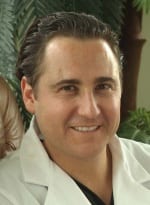Val Lambros, MD, a pioneer in aesthetic plastic surgery, continues to redefine aging progression. This time using 3D imaging at the Aesthetic Meeting of the American Society for Aesthetic Plastic Surgery in Las Vegas.
Information from the not-yet-published 15-year study brought into question “common” understandings about how the face ages using 3D digital scans taken by Lambros of the faces of plastic surgeons.
Last year, Lambros began the process of combining the hundreds of facial images down to one image. After the combination process, the image underwent animation before being combined with another hundred images from an age group 50 years older, according to Lambros. Once combined, Lambros could mathematically analyze the images.
Findings from the yet-unpublished study found thinning lips influence the base of the nose. The aging process draws the tip of the nose toward the lip and it influences the nasolabial crease, Lambros says.
“If you listen to 10 plastic surgeons or dermatologists expound on the subject [of facial aging], you will hear at least eight explanations for what happens and how … Most of these explanations have little to do with the process but quite a lot to do with the surgical techniques designed to make aging faces look better.” Lambros says, according to a news story that appears in Cosmetic Surgery Times.
Other industry contributions from Lambros include the discovery of the necessity to fill in the face in addition to pulling it tighter. In an October 2007 study in Plastic and Reconstructive Surgery, Lambros suggested the subcutaneous tissue present in the vertical descent of the skin wasn’t a large part of aging in those areas.



